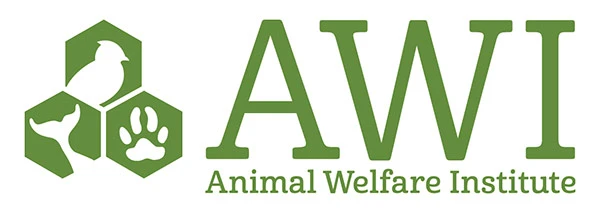
Green Buildings: Pioneering Sustainability in Real Estate | Inland Real Estate School
Green Buildings: Pioneering Sustainability in Real Estate
I. Introduction
Sustainability - the practice of caring for our planet - is a rapidly growing focus across various sectors. Notably, in real estate, we're observing a significant shift towards sustainable practices, with the rise of green buildings as a shining example.
II. The Concept of Green Buildings
So, what exactly is a green building? It's a building designed and built (or renovated) in a way that's good for the environment and the people living or working in it. This can be anything from the place where the building is located, to the way waste is dealt with during construction.
Green buildings aren't a new idea. In the past, people often built houses using local, sustainable materials and made sure the design suited the local climate. Modern green buildings mix these old principles with new, tech-savvy ways of living.
III. Key Features of Green Buildings
A. Energy Efficiency
One of the main things about green buildings is that they don't waste energy. This can be done through energy-saving appliances, good insulation, and modern heating, ventilation, and air conditioning systems (often shortened to HVAC). These not only help save the planet but also reduce energy bills. Smart technologies can help manage energy use to fit the needs of the people in the building.
B. Use of Renewable Energy
Renewable energy sources like solar panels, wind turbines, or systems that use heat from the earth (geothermal systems) are common features of green buildings. They reduce the need for non-renewable energy like gas or coal and help make the building self-sufficient. Solar panels are especially popular due to their falling cost and increasing efficiency.
C. Water Conservation
Green buildings often have systems for conserving water, like rainwater collection and systems that recycle 'greywater' (water from baths, sinks, washing machines, and other kitchen appliances). These systems can cut down on water waste and reduce reliance on public water supply.
D. Green Rooftops
Green rooftops are roofs covered in plants. They make a building look good and also have practical benefits, like absorbing heat (which helps keep the building cool) and improving air quality.
IV. Impact of Green Buildings
Green buildings are good for the planet and for people. They cut down on energy and water use, reducing pollution. They also make the future more sustainable by promoting saving resources and reducing waste.
Additionally, they're good for the people living or working in them, with better air quality and plenty of natural light. Even though they might cost more to build, the money saved on bills over time makes them a smart investment.
V. Case Studies of Green Buildings
There are great examples of green buildings all around the world.
Residential: In Amsterdam, a residential building called 'The Edge' makes more electricity than it uses, thanks to solar panels and energy-saving design.
Commercial: The Bullitt Center in Seattle, USA, is known as the greenest commercial building in the world. It has a system for turning rainwater into drinking water, composting toilets, and uses very little energy.
Public: The California Academy of Sciences in San Francisco, USA, has a huge 2.5-acre roof covered in plants, a large set of solar panels, and an impressive water recycling system.
VI. Future of Green Buildings
The future is bright for green buildings. Governments and other organizations are encouraging green buildings by offering benefits and awards. For example, Leadership in Energy and Environmental Design (LEED) and Building Research Establishment Environmental Assessment Method (BREEAM) are certifications that promote sustainable building.
New technology like artificial intelligence and the Internet of Things (IoT) are making green buildings even better. Some people are still worried about the cost of building green, but with renewable energy getting cheaper and the money saved in the long run, more and more people are realizing that it's a smart move. As more people start to live sustainably, the demand for green buildings is likely to keep going up.
VII. Conclusion
Green buildings are not just a trend - they're a sign that we're committed to a greener future. These buildings show that we can live and work in a way that's good for us and the planet.
As we face the challenges of the 21st century, it's important that we embrace green buildings. Each green building helps us reduce pollution and makes our planet a better place to live for future generations. After all, we're only borrowing the Earth from our children.
Embracing green buildings is not just about securing our future, but it's also about advancing our present. As we face the urgency of environmental issues, it becomes paramount that every sector, including real estate, works towards sustainability. In this context, real estate professionals become key players in this green revolution, steering the industry towards a sustainable future.
Education and awareness among professionals and consumers alike is crucial. At Inland Real Estate School, we offer a range of comprehensive courses, from brokerage to appraisal, from investing to licensing, all of which contribute to a well-rounded understanding of the real estate market.
Aspiring real estate professionals can apply this knowledge to understand, appreciate, and advocate for the value of green buildings and other sustainable practices in real estate.
The future of green buildings looks promising with government incentives, technological advancements, and growing public awareness driving their adoption. They're moving from being a niche market to becoming the new norm. As the real estate industry continues to evolve and adapt, we can look forward to a more sustainable future where green buildings play a pivotal role.
WE OFFER OVER
25+
PROGRAMS
WE HAVE SERVED
12000+
STUDENTS
VETERAN STAFF
40+ Years
INDUSTRY EXPERIENCE
PROUDLY PROVIDING
23+ Years
OF EDUCATION
INLAND REAL ESTATE SCHOOL, INC. SUPPORTS

Campus Visiting Hours by appointment only:
1st-18th each month AM times, M-F
19th-end of the month PM times, M-F
Visiting hours need to be scheduled in advance
Not affiliated with The Inland Real Estate Group of Companies, Inc. and “The “Inland” name is a registered trademark being used under license”
OAK BROOK, ILLINOIS 60523. © INLAND REAL ESTATE SCHOOL, INC. A PROFESSIONAL LEARNING INSTITUTE, INC. COMPANY, 2010. ALL RIGHTS RESERVED.
NOT AFFILIATED WITH THE INLAND REAL ESTATE GROUP OF COMPANIES, INC. THE INLAND NAME IS USED UNDER LICENSE. Privacy Policy







